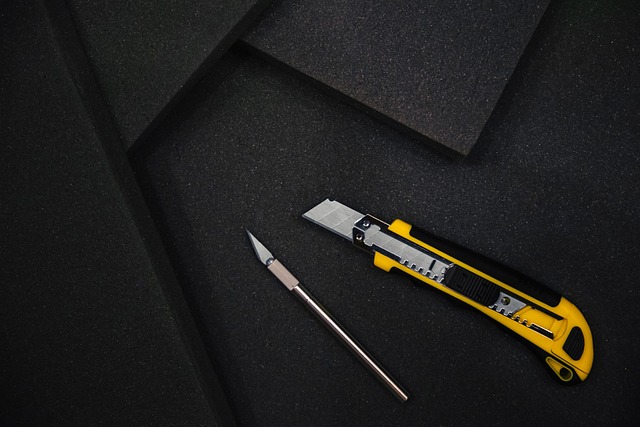
Are you looking to breathe new life into your culinary space? Look no further. In this comprehensive guide, we will provide you with practical tips and insights on how to refurbish your kitchen and create a space that not only meets your needs but also reflects your personal style.
From identifying areas for improvement to setting a budget, choosing a design, and purchasing materials, we have you covered every step of the way.
Get ready to transform your kitchen into a space that inspires and delights.
Areas for Improvement
When considering a kitchen refurbishment, it is essential to identify the key areas that require improvement. One common concern is the lack of space, which can hinder efficiency and functionality. To address this issue, consider expanding the available space by removing unnecessary barriers or installing additional storage options. This can include adding more cabinets or shelves, utilizing wall space, or incorporating innovative storage solutions.
Another aspect to consider for improvement is upgrading your appliances. Outdated or inefficient appliances can hinder your cooking experience and consume unnecessary energy. Consider investing in energy-efficient models that not only save on utility bills but also offer advanced features and improved performance. Upgrading appliances can also enhance the aesthetic appeal of your kitchen, giving it a modern and sleek look.
Setting a Budget
To effectively plan for your kitchen refurbishment, it is crucial to establish a realistic budget that aligns with your desired improvements and overall goals.
Budget planning is an essential step in the process of revamping your culinary space, as it helps you make informed decisions and prevents overspending.

To begin, assess your financial situation and determine how much you can comfortably allocate to the project. Consider factors such as the scope of work, materials, appliances, and labor costs.
Research the average prices for the items on your wishlist and get multiple quotes from contractors to ensure accurate cost estimation.
It is also wise to set aside a contingency fund for unforeseen expenses.
Choosing a Design
When selecting a design for your kitchen refurbishment, it is important to carefully consider the overall style and aesthetic you wish to achieve. Your kitchen should not only be functional but also reflect your personal taste and create a space that you enjoy spending time in.
Here are three key factors to consider when choosing a design for your kitchen:
- Color palette: The colors you choose for your kitchen can greatly impact the overall ambiance. Consider using neutral tones for a timeless and elegant look, or opt for bold and vibrant colors to add a pop of excitement. Remember to choose colors that complement your existing décor and create a cohesive look throughout the space.
- Lighting options: Good lighting is essential in any kitchen. Consider incorporating a mix of ambient, task, and accent lighting to provide both functionality and visual appeal. Install overhead lighting fixtures for general illumination, under-cabinet lights for task lighting, and pendant lights or chandeliers for a touch of elegance.
- Layout and flow: The design of your kitchen should promote efficient workflow and make cooking a breeze. Optimize the layout by ensuring that the sink, stove, and refrigerator form a functional work triangle. Consider adding an island or peninsula for additional workspace and storage.
Purchasing Materials
In the process of refurbishing your kitchen, it is crucial to carefully select and procure the necessary materials. When it comes to purchasing materials for your kitchen renovation, there are two key factors to consider: comparing prices and sustainable options.
Comparing prices is essential to ensure you get the best value for your money. Take the time to research and compare prices from different suppliers to find the most cost-effective options.

Additionally, consider sustainable materials for your kitchen renovation. Sustainable options, such as eco-friendly flooring, energy-efficient appliances, and recycled countertops, not only help the environment but also contribute to a healthier and more sustainable kitchen space.
Removing Old Fixtures
During the process of refurbishing your kitchen, it is imperative to carefully execute the removal of outdated fixtures. This step is crucial in creating a fresh and updated space for your culinary adventures.
Here are three essential steps to consider when removing old fixtures:
- Start with upgrading appliances: Before removing any fixtures, it is wise to upgrade your appliances first. This ensures that you have the right measurements for new fixtures and prevents any damage during the removal process.
- Repainting walls: While removing old fixtures, take the opportunity to repaint your kitchen walls. A fresh coat of paint can instantly transform the look and feel of the space, giving it a new lease on life.
- Proper disposal: When removing old fixtures, ensure that you dispose of them responsibly. Consider donating or recycling them, if possible, to reduce waste and contribute to a sustainable environment.
Frequently Asked Questions
How Do I Choose the Right Appliances for My Refurbished Kitchen?
When refurbishing your kitchen, it is important to choose energy efficient appliances that align with the latest trends. Consider factors such as functionality, style, and durability to create a modern and practical culinary space.
Should I Hire a Professional Contractor or Can I Do the Refurbishing Work Myself?
When considering refurbishing your kitchen, it is important to weigh the pros and cons of doing the work yourself versus hiring a professional contractor. Factors such as budget considerations should also be taken into account.
What Are Some Tips for Maximizing Storage Space in My Renovated Kitchen?
To maximize storage space in a renovated kitchen, one can employ clever organization techniques such as utilizing vertical space, incorporating creative shelving, and integrating hidden storage solutions. These practical strategies allow for efficient use of limited kitchen space.
Are There Any Eco-Friendly Options for Kitchen Materials and Fixtures?
There are numerous eco-friendly options available for kitchen materials and fixtures, allowing homeowners to create a sustainable and environmentally conscious culinary space. From recycled countertops to energy-efficient appliances, these choices can help reduce waste and minimize the carbon footprint of your kitchen renovation.

How Long Does the Refurbishment Process Typically Take From Start to Finish?
The refurbishment process timeline for a kitchen can vary depending on the scope of work. Common challenges in kitchen refurbishment include budget constraints, coordinating contractors, and unexpected issues that may arise during the renovation.
 Family Craft ProjectsHome ImprovementCooking and BakingReuse and RecycleDIY GiftsEco-Friendly ProjectsDIY Home SolutionsSeasonal ActivitiesFun and GamesLearn TogetherPrivacy PolicyTerms And Conditions
Family Craft ProjectsHome ImprovementCooking and BakingReuse and RecycleDIY GiftsEco-Friendly ProjectsDIY Home SolutionsSeasonal ActivitiesFun and GamesLearn TogetherPrivacy PolicyTerms And Conditions
